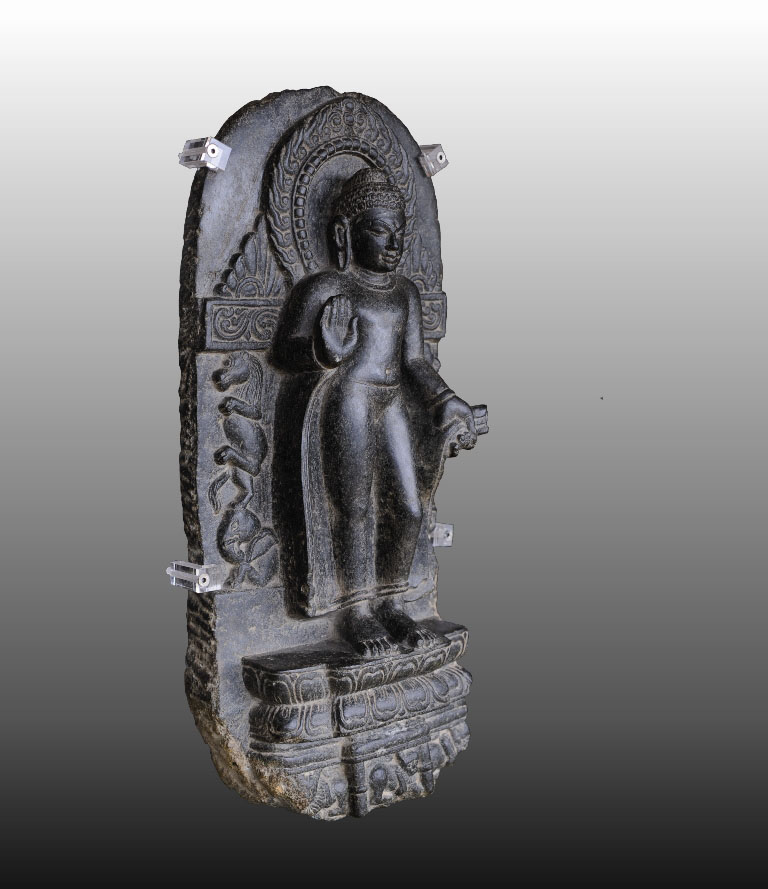Udayana Buddha standing in samabhanga poisition and is right hand is in the abhaya-mudrâNorth India - Chlorite - height 52 cm - width 22 cm - Pala Period 12th century
This standing Buddha, his peaceful face gently smiling, is portrayed with his right hand in the fear-allaying gesture, abhaya-mudrâ. The gesture, directed at the faithful who addresses him with devotion, indicates his ability to pacify and protect human beings from any threat to their spiritual or physical sphere.1 The left knee, slightly thrust forward, also indicates his loving and compassionate élan towards the faithful. Thin, delicately sculpted folds evoke a long robe, possibly of light muslin, wrapping this Buddha’s body down to the ankles, and gently held in his left hand. The Buddha stands on a lotus flower with petals pointing both up and down, a characterisitic that appears in north Indian sculpture starting from the 10th century.2 The type of halo around his head, made of a row of large pearls and of curly flames, the two flaming jewels on the throne-back on either side of the Buddha, and the very structure of the decorated backrest, supported on elephants and lions, are all typical elements of the art of Bihar during the Pâla dynasty, between the 10th and 11th centuries.3
[1] Fredrick W. Bunce, Mudrâs in Buddhist and Hindu Practices. An Iconographic Consideration, D.K. Printworld, Delhi 2001, p. 2. [2] Pratapaditya Pal, Indian Sculpture, vol. 2, Los Angeles County Museum of Art in association with University of California Press, Berkley, Los Angeles, London 1988, p. 168, fig. 75. [3] Susan L. Huntington e John C. Huntington, The Art of Ancient India, Weatherhill, Boston and London 2001, p.397, fig 18.10 e p. 461, fig. 20.15. ALC (Free Circulation) |



